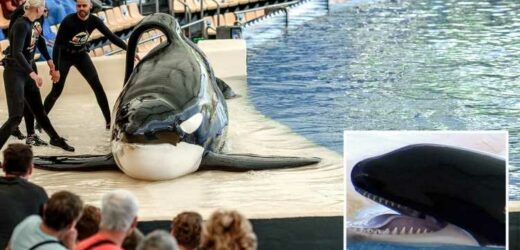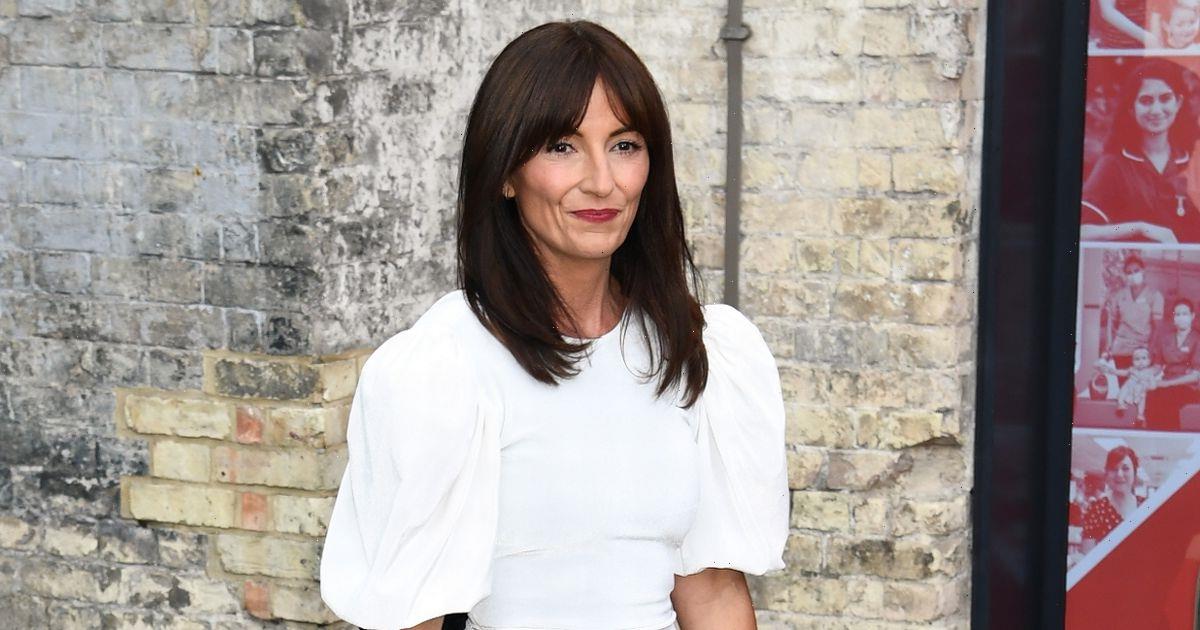A KILLER whale who was separated from her mum when she was just two years old died years later from the "trauma" of captivity, animal activists claim.
Skyla the killer whale died when she was 17 after spending her whole life in captivity when she was ripped away from her mum Kalina, SeaWorld's original "Baby Shamu".
She died earlier this year at the Loro Parque zoo in Tenerife, Spain, after suffering from gastric torsion which led to septicemia.
Animal activists at Peta – as part of their ongoing SeaWorld of Hurt project – have argued the condition may have brought on by "trauma" or other abnormal behaviour linked to being held captive.
Loro Parque however have argued the orca was in "perfect condition" right up until the time of her untimely demise.
In their natural habitat, orcas can live between 30 and 50 years with a female's maximum life expectancy being between an astonishing 80 and 100 years.
Killer whales are argued by animal activists to suffer stress, depression and physical discomfort when they are kept in captivity – with the animals used to swimming up to 40 miles a day and diving to depths of 500 feet.
And they have the second largest brain of any animal at 6kgs – four times bigger than humans with 1.5kg – and are highly intelligent creatures.
Peta blamed Skyla's death on her captivity and said she had been "kidnapped" from her mum – with many orcas staying with their parents well into adulthood in the wild.
"While the cause of intestinal torsion is elusive in a lot of cases, it has been linked to chronic gastrointestinal disease, dietary indiscretion, trauma, and frantic or erratic behavior in cetaceans and an array of other species," Peta said on SeaWorld of Hurt.
"While it’s possible for intestinal torsion to develop suddenly and lead rapidly to death, it’s unlikely that her condition wasn’t precipitated by some other malady (like chronic or acute infection), trauma, or abnormal behavior."
Skyla's father was the infamous orca Tilikum – the subject of the documentary BlackFish – who was the largest whale kept in captivity and who was involved in the deaths of three people.
BlackFish, released in 2013, shined a light on the conditions of orcas held in captivity and argued the animals suffer physical stress and psychological damage.
The movie triggered a reaction which saw attendances to SeaWorld drop and for the animal park to change to some of its policies.
In 2006, Skyla was was just two years old when SeaWorld ripped her from her mum in Florida and shipped her thousands of miles away across the Atlantic to the Canary Islands.
She was flown thousands of miles in a transport plane before being hoisted by a crane into her new tank while on "loan" from SeaWorld.
There she spent her lonely days isolated in a prison-like tank where she longed for her mum until her death in March.
'PERFECT CONDITION'
According Peta, experts have identified health problems and psychological distress in the orcas at zoos around the world.
Orcas kept in captivity are housed in small tanks and are forced to swim in endless circles, and they often break their death off of the concrete sides of the tanks out of stress.
However, many who are pro-captivity would argue the orcas held at the parks are not safe to released back into the world.
The day following Skyla's death, Loro Parque zoo released a statement claiming the whale had been in "perfect condition" before her untimely demise.
“Skyla was in perfect condition until yesterday when she began to show some signs of discomfort, which immediately mobilized our team of experts," Loro Parque zoo said in a statement.
"Despite all the effort, the veterinarians were only able to certify her demise."
The day after Skyla's death, the zoo offered a follow-up after a necropsy – an autopsy of an animal -was performed.
“According to the results of the necropsy, the cause of death was intestinal torsion, which caused acute septicemia and immediate death," the follow-up stated.
"This pathology can occur suddenly in completely healthy animals and is absolutely inoperable in cetaceans, so, despite all our precautions and efforts, it would not have been possible to do anything to save Skyla’s life.”
Although Skyla is one of the latest orcas to die in captivity – she may not be the last.
According to the non-profit Whale and Dolphin Conservation USA, at least 43 orcas have died across SeaWorld's three parks in the United State.
Last month, two SeaWorld trainers revealed how they routinely drugged the orcas and deprived them of food.
The animals even self-harmed as a result of the psychological trauma they suffered.
Jeffrey Ventre, who landed the role of SeaWorld trainer in 1987, said that the tortured marine mammals would grind their teeth or chew concrete out of boredom, causing dental damage.
He says: “There was a lot of self-mutilation. Jaw popping was regularly seen – it's a threat display between two orcas."
Jeffrey claims the whales were medicated daily for medical conditions – but also to control their behaviour.
“The whales and dolphins were stressed and this caused stomach ulcers," he explains.
"So they got meds for that. They also got chronic infections, so they got antibiotics. They were also sometimes aggressive or hard to control so they could be given Valium to calm their aggression.
'SELF-MUTILATION'
“All whales were getting vitamins packed in their fish. Several got daily antibiotics, including Tilikum, for chronic teeth infections.”
Meanwhile, John Hargrove began his killer whale training in 1993, when he was 20, and resigned in 2012.
He remains deeply affected by what he saw, explaining captivity cut the whales' lives short.
He adds: "I worked with some whales that were on medication every day of their life and have personally watched whales die at very young ages from disease.
“It was the most difficult decision in my life to have to walk away from the whales I loved to be able to become a whistle-blower and expose the industry."
It comes as The Sun Online told the story of Hugo, a killer whale who is claimed to have essentially killed himself by smashing his head into his tank.
And we also looked at the story of Morgan, a whale who went viral after appearing to purposefully beach herself at Loro Parque, and the dolphin Kathy, who drowned herself after starring in TV show Flipper.
We pay for your stories!
Do you have a story for The Sun news desk?
Email us at [email protected] or call 02077824104. You can WhatsApp us on 07423 720 250. We pay for videos too. Click here to upload yours
Click here to get The Sun newspaper delivered for FREE for the next six weeks.
Source: Read Full Article






